Spanish magdalenas are tall, fluffy, lemon-flavored Spanish muffins. They're simple to make and perfect with a steaming hot cup of café con leche. Loved by adults and children alike, this authentic magdalenas recipe is a must-try!
If you love Spanish sweets, don't miss these recipes for quesada pasiega and crustless pumpkin cheesecake!
Introduction
Here in Spain, a quick and easy breakfast option is a magdalena, a homemade Spanish muffin (also called a cupcake) that's baked with olive oil and some lemon zest. Every bakery has its signature magdalenas recipe, some adding orange zest or cacao for a change. But there's nothing like a warm magdalena, fresh out of the oven!
I have to be honest: when I first tried a magdalena here in Spain, I was surprised at how simple these famous Spanish cupcakes are. Coming from the US I was craving some chocolate chips, or the sweetness of a ripe banana. But many years later, I now adore the simplicity of a good magdalena, and like anything, it's well worth it to make them from scratch.
This Spanish magdalenas recipe is the most traditional I've tried. This magdalenas recipe is easy to whip up in a pinch. Enjoy!
Ingredients
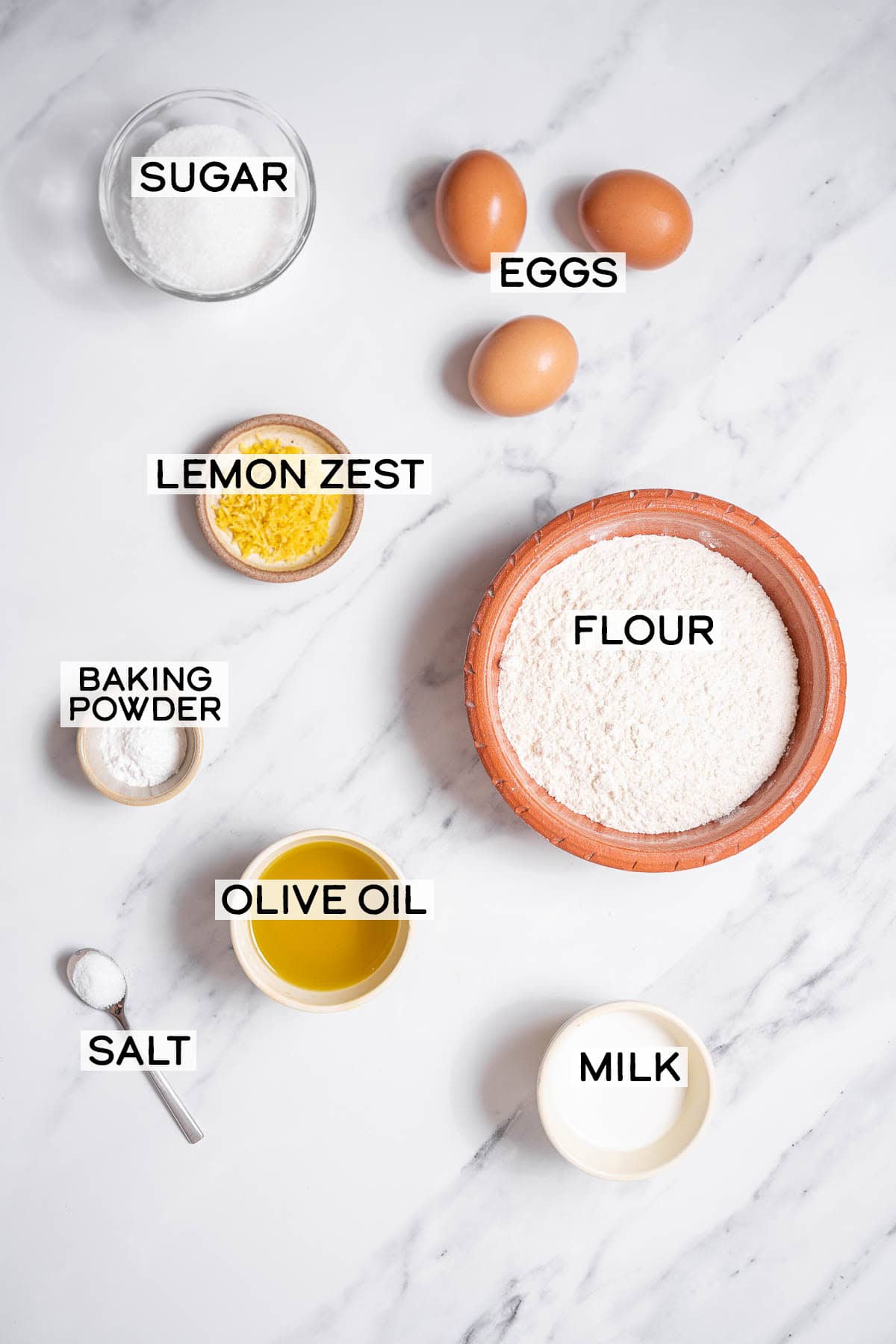
If you're ready to start baking these magdalenas, that's awesome! Let me tell you about the key ingredients you'll need.
- Flour: Most Spanish muffin recipes call for all-purpose flour. You can also use cake flour or even substitute half of the flour for whole wheat flour; this will produce a different taste, but a healthier muffin!
- Milk: If you don't want to use milk, just use one more egg.
- Egg: Eggs, olive oil, and lemon are what these muffins taste like! So use the best eggs you can, at room temperature.
- Olive Oil: Make sure to use high quality extra virgin olive oil here. These muffins taste like the oil you'll use (that's the point!), so make it a good one! I personally like using a fruity extra virgin olive oil to make these muffins (such as arbequina), though you can substitute the oil of your choice.
- Lemon Zest: The classic muffins use lemon zest, but you can substitute orange or lime zest, or spices like cinnamon, cardamom, or nutmeg.
See recipe card for full information on ingredients and quantities.
How to Make Magdalenas (Spanish Muffins)
If you’d like to see the full ingredients and instructions, scroll to the bottom of the post for the printable recipe card.
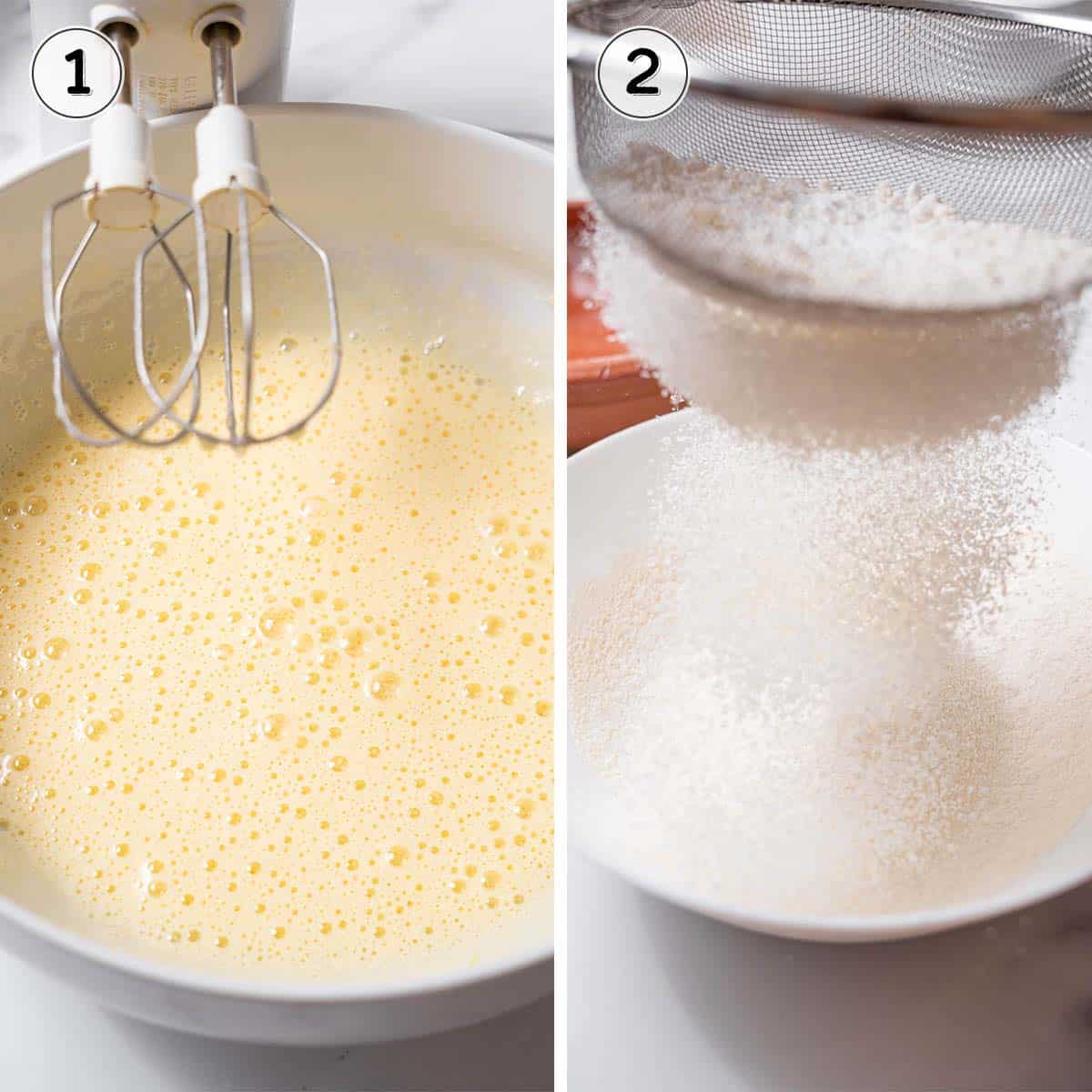
- Beat the eggs and sugar together until the sugar is dissolved and the mixture becomes pale. (image 1)
- In a separate bowl, mix the flour, salt, and baking powder. (image 2)
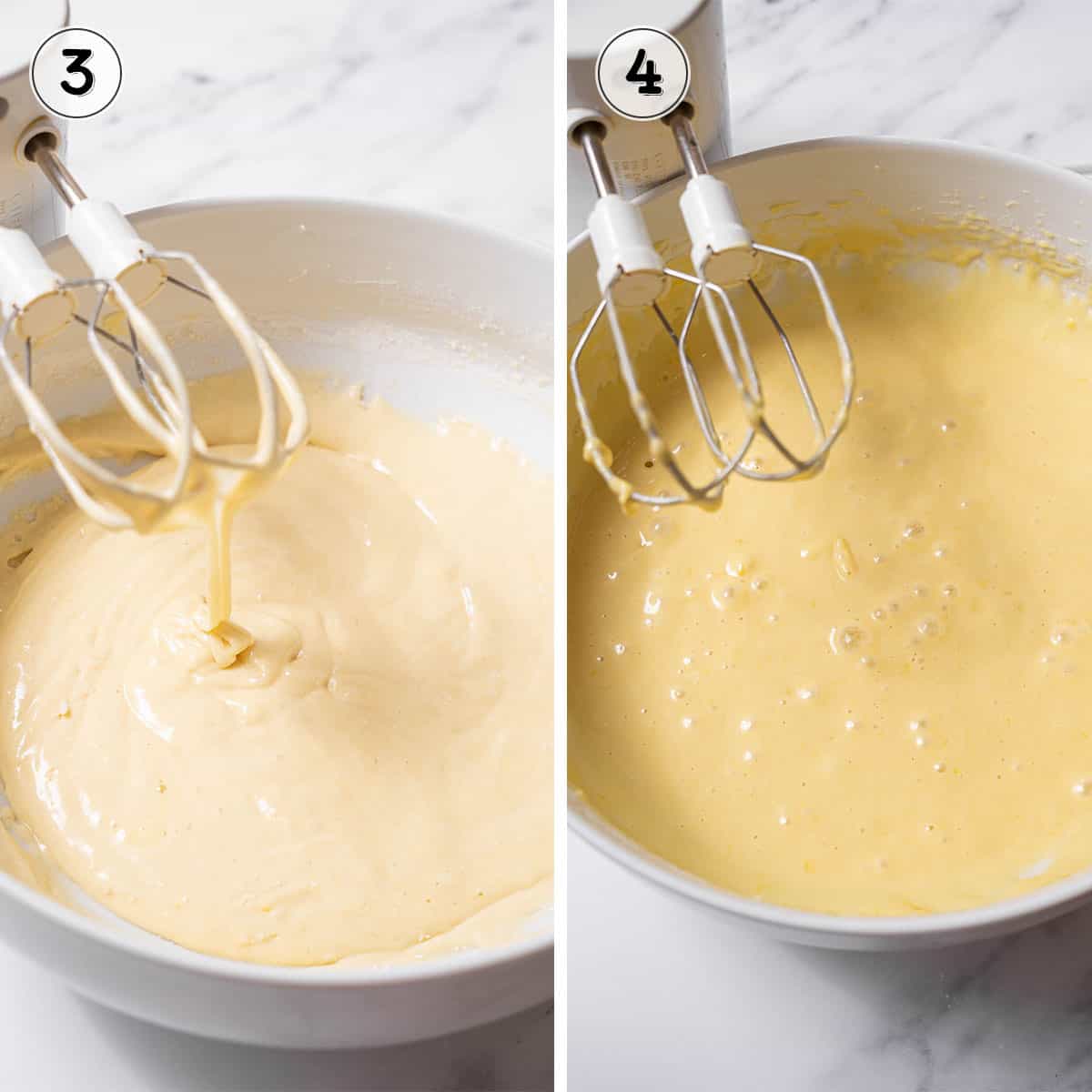
- Add the dry ingredients to the wet ones, whisking until just combined. (image 3)
- When all of the flour mixture is incorporated, gradually add the olive oil, whisking constantly. Add the milk and lemon zest as well. (image 4)
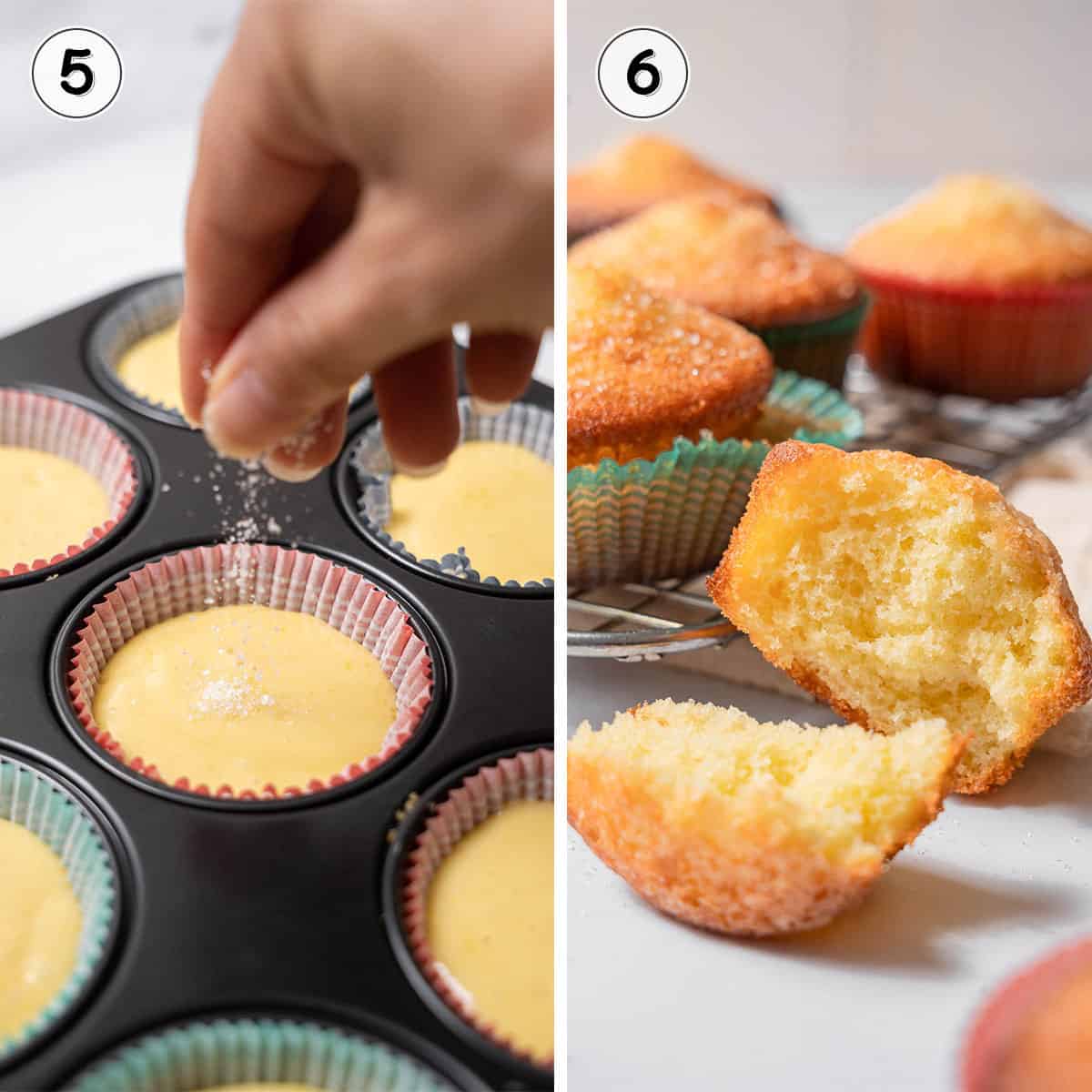
- Cover the batter with plastic and refrigerate for one hour, then fill your muffin tins ¾ of the way full and sprinkle with sugar on top. (image 5)
- Preheat the oven to 480°F (250°C). As soon as the muffins go in, lower the heat to 400°F (200°C). This makes the muffins rise even more! Bake for 15 minutes and don't open the oven until then. Check with a toothpick to make sure they're done, then cool in the pan for 5 minutes before devouring! (image 6)
Recipe FAQs
Magdalenas are Spanish muffins made from flour, sugar, baking powder, salt, eggs, olive oil, lemon zest, and milk. They have a soft, fluffy texture, a crunch from the sugar topping, and a delightful lemony-olive oil flavor.
Magdalenas are the Spanish version of muffins or cupcakes and originate in Spain. Some claim they're based on French madeleines, but one key difference is that in Spain the recipe uses extra virgin olive oil, while the French cake uses butter.
In Spain, they are most commonly consumed for breakfast with a cup of coffee. In the past, these small treats were traditionally baked for holidays and birthdays, but nowadays they can be found throughout Spain, in supermarkets and bakeries. Some say that the name magdalenas is derived from a story about a young girl named Magdalena, who used to give these cakes to pilgrims who were going to Santiago de Compostela in Galicia.
The Spanish story says that there was a young woman named Magdalena who would bake these cakes and serve them to the pilgrims on the Camino de Santiago (the Way of St. James). This explains why they are so well-known all throughout Spain.
Magdalena is the Spanish equivalent of the English name Magdalene (as in Mary Magdalene from the Bible). This name was given to these muffins because the young woman who created them was named Magdalena.
Serve
I love eating my magdalenas with a hot cup of Spanish coffee. A café con leche never fails! If you want something even sweeter, go for a mug of Spanish hot chocolate. You can also host a sweet and savory snack time by combining these delicious Spanish cupcakes with a good homemade Spanish tortilla. Yum!
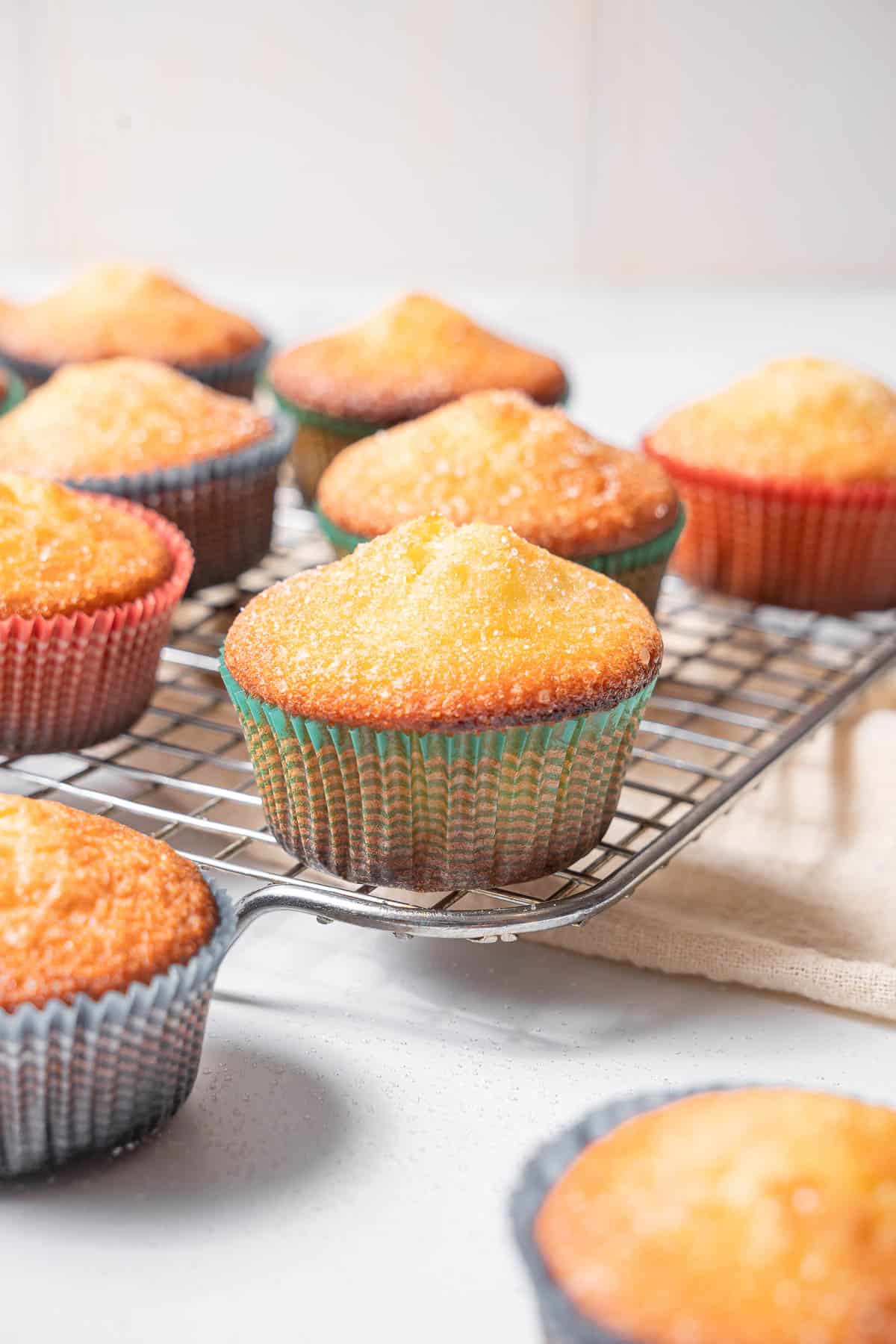
Expert Tips
- Bring the milk and eggs to room temperature before baking. This ensures that the batter mixes together smoothly!
- You can always add spices such as cinnamon or saffron, or swap the lemon zest for orange zest or cocoa--yum!
- To make sure your magdalenas rise nice and high (their signature shape) make sure not to overmix, to refrigerate the batter before baking, and to start the oven at 480°F (250°C) and lower as soon as you put them in to 400°F (200°C). These three things should leave you with volcano shaped muffins!
More Delicious Spanish Cakes
If you liked this recipe, please share it with others!
Follow Spanish Sabores on Facebook, Pinterest, and Instagram for more recipes and travel tips.
If you've made and enjoyed this recipe, please leave a 5-star review!
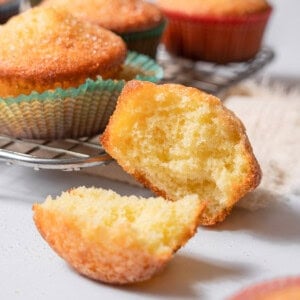
Spanish Magdalenas Recipe
Ingredients
- 3 eggs at room temperature
- ½ cup + 1 tablespoon granulated sugar plus extra to top the muffins (optional)
- 1½ cups all-purpose flour
- 2 teaspoons baking powder
- ½ teaspoon salt
- ½ cups extra virgin olive oil
- ¼ cup whole milk at room temperature
- zest of 1 lemon
Instructions
- Beat the eggs and sugar in a large bowl until the sugar is completely dissolved.
- Sift the flour, salt, and baking powder together in a separate bowl, then add it to the egg and sugar mixture. Whisk until just incorporated.
- Add the olive oil, milk, and lemon zest and whisk until well combined.
- To achieve the spongy texture of a Spanish magdalena, you'll need to let the batter rest in the fridge. Cover the bowl with plastic wrap and leave in the fridge for 1 hour.
- Meanwhile, preheat the oven to 480°F (250°C). Line a 12-hole muffin tray with paper wrappers.
- Fill the wrappers ¾ of the way with the chilled batter. If you'd like, sprinkle a pinch of sugar on top of each muffin to form the sugary crust that is typical of Spanish magdalenas.
- As soon as you put the muffins in the oven, lower the heat to 400°F (200°C). Bake for 15 minutes on the middle rack. Test with a toothpick in the middle of a muffin to make sure they're cooked through. Don't open the oven until you think they're ready!
- Let the magdalenas cool in the pan for at least 5 minutes, then enjoy them warm or let them finish cooling on a wire rack. Enjoy them with a hot cup of coffee!
Notes
- Bring the milk and eggs to room temperature before baking. This ensures that the batter mixes together smoothly!
- You can always add spices such as cinnamon or saffron, or swap the lemon zest for orange zest or cocoa--yum!
- To make sure your magdalenas rise nice and high (their signature shape) make sure not to overmix, to refrigerate the batter before baking, and to start the oven at 480°F (250°C) and lower as soon as you put them in to 400°F (200°C). These three things should leave you with volcano shaped muffins!
Nutrition
Photography by Giulia Verdinelli


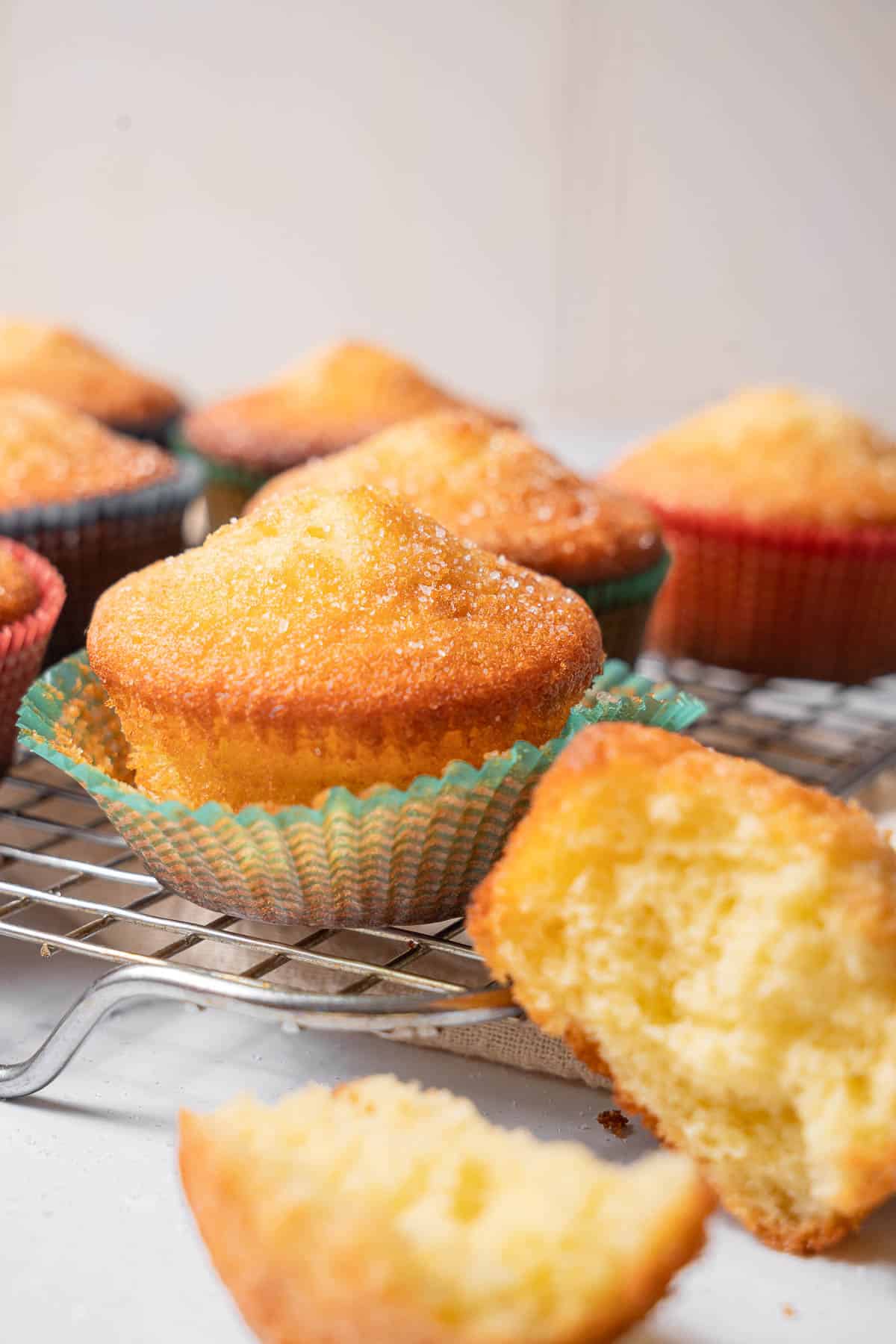
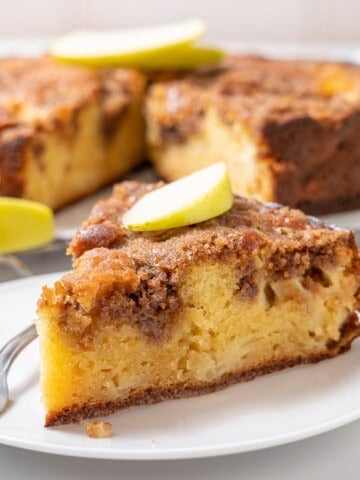
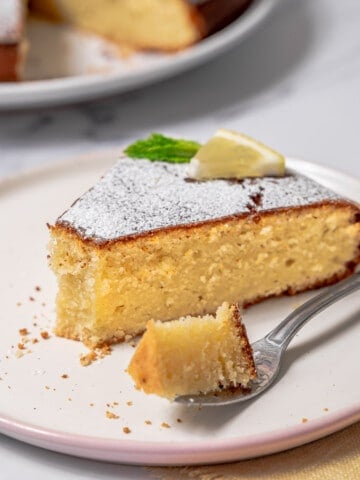
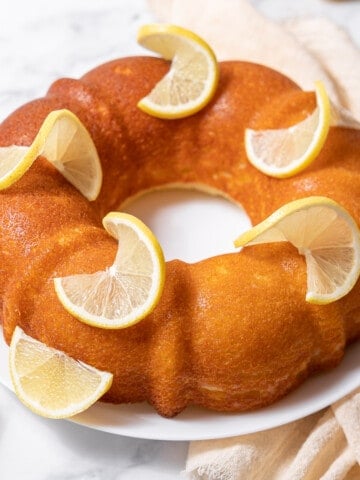
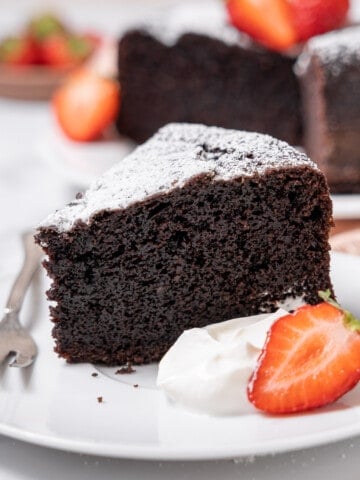
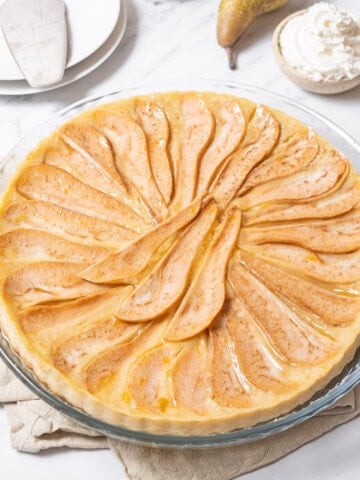

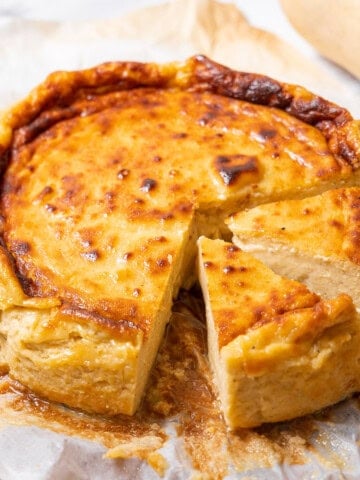
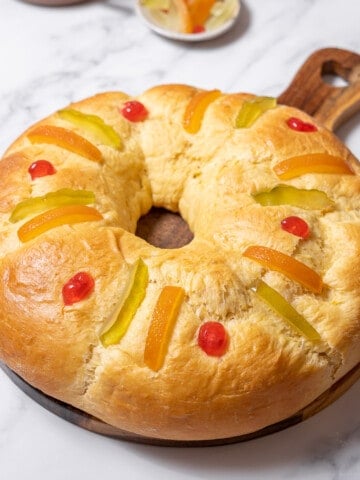
arj
Wonderful! Turned out perfectly. They smelled so good baking, too. Question: Why do we not add the olive oil and milk to the wet ingredients? Curious why they are added after we incorporate the dry ingredients with the sugar and eggs. It's a bit harder to mix up this way. Though I followed the recipe exactly to make sure they came out, I wondered if the olive oil, milk, and zest could be added to the egg and sugar mixture? Thank you!
Michelle
Up in the picture you list baking soda but in the recipe ingredients you say baking powder. Which one is correct?
Lauren Aloise
Oops - I will have to redo that graphic! It is baking powder, as listed on the printable recipe card. Thank you!
Irene
Made this today following the recipe exactly and they turned out perfect. That was with 2 teaspoons baking powder and 1 hour rest in the fridge as indicated. .
Louise
These are brilliant - I followed the recipe exactly and they turned just like the ones we used to have in Spain. ❤️
Lynne
Great recipe - went down very well with my Spanish husband - I varied mine and did some as in recipe, some with a half teaspoon of chocolate & hazelnut spread and some with same amount of strawberry jam - all were very good might add a bit more lemon zest next time
Patricia Molero Firmani
Have used this recipe with great success for my Spanish classes. Right ingrediates are important especially the oil you use (Goya extra virgin has always worked for me). I use raw cane turbinado sugar making sure it's well blended with the eggs and sprinkle just a little on the tops before they go in the oven.
Naomi
Can you freeze these please?
Also I love the orange taste so would I just use the zest of half an orange instead of a lemon?
Thanks
Deborah Shriver
I made the magdalenas and they were yummy! I put the recipe with the link to your site and let my readers know that the recipe came from you. Going to Barcelona and other places in the Spring. Glad you left the olive oil in Other recipes call for butter which I think we need to keep the olive oil in. Thanks for the great web site.
McCallon
Make sure to use olive oil because using other oils makes the cakes extremely oily! I've made them for Spanish class many times and I've learned that the oil you use makes a huge difference!
India
Could the mixture be made ahead of time and stored in the refrigerator longer than 30 minutes? Perhaps overnight?
Lauren Aloise
It's best to use immediately or the muffins won't rise properly.
Shiphrah
2 tablespoons of baking powder??!!?! That's a humongous amount by American standards. Is Spanish BP different from American?
Lauren Aloise
I thought the same - I don't believe it's different, I suppose it's why they rise so tall? This is the classic recipe most grandmas make!
Amy
My daughter and I made these today for a project for her Spanish class. They are SO oily! The oil can practically be rung out of the baking cups.. Can you check that the proportions are correct?
Lauren Aloise
Hi Amy, that is odd-- I have made these many times without an issue. I'm wondering if maybe your eggs were larger than what we use in Spain? I'm sorry to hear they didn't turn out well, though the recipe should work! Good luck with the project!
Kiana Smithers
Great flavour although i used self raising flour and doubled the amount one cup wasnt enough the mixture was still like water and i used 1 and a half lemons just for more zing. I doubled the whole recipe and it made 60 magdalenas but they all got eaten.
Sooo yummy!